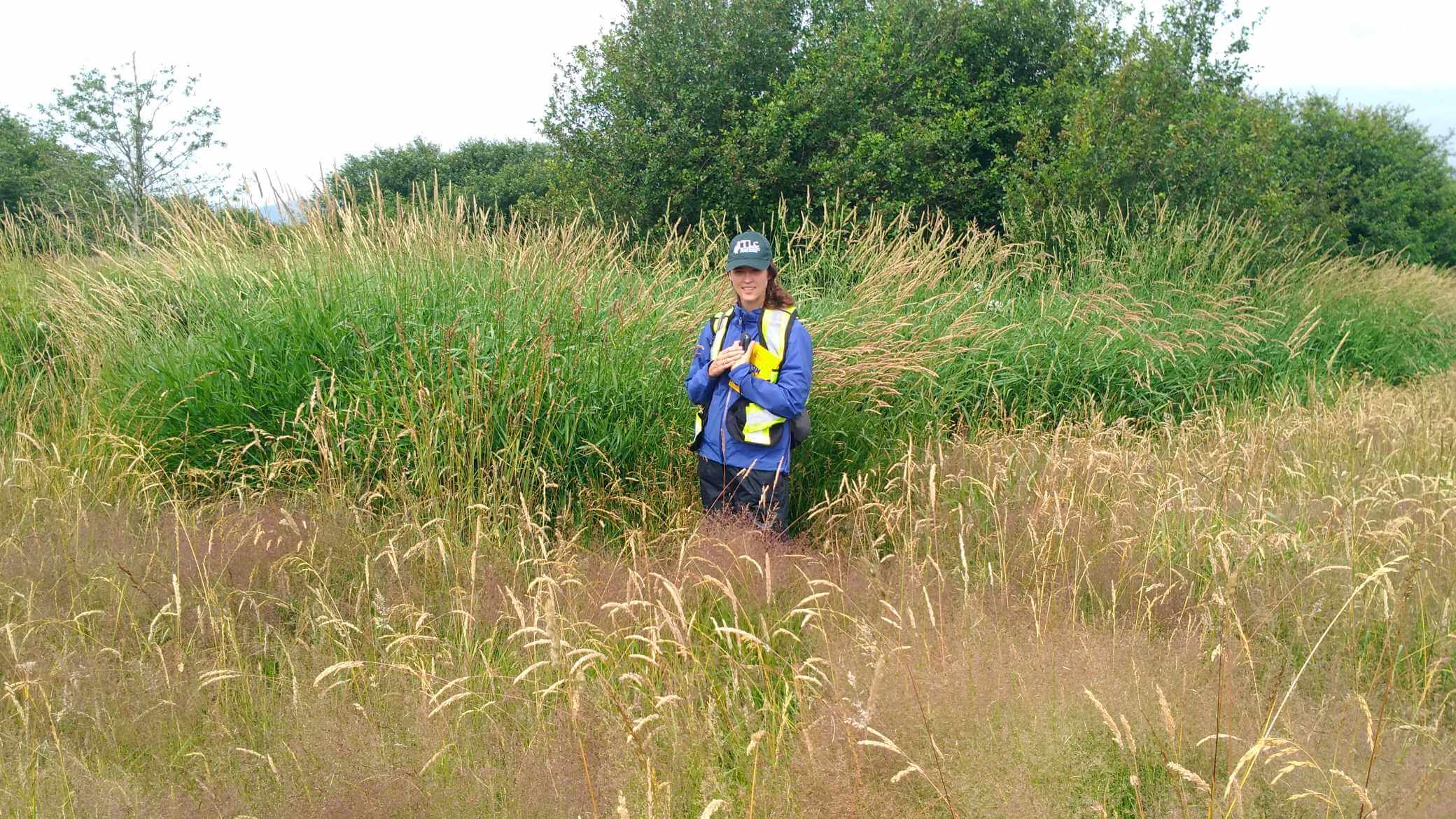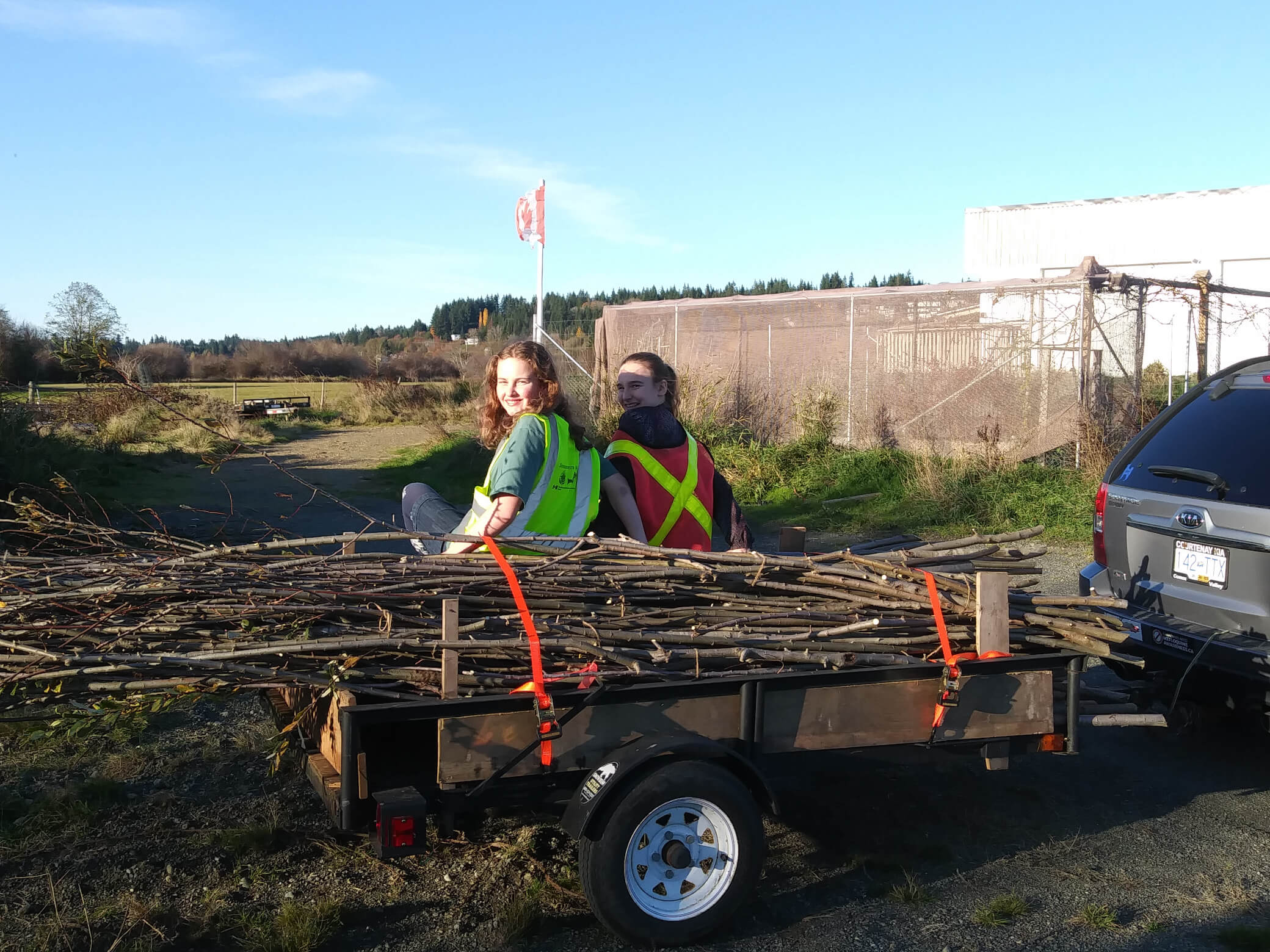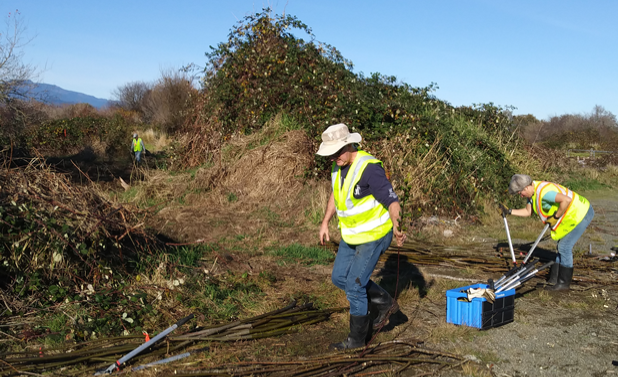Mallard Creek Reed Canary Grass Removal Project
Since 2004, it is estimated that the amount of RCG in the K’ómoks Estuary has tripled. RCG provides little value for native wildlife and insects, few species will eat it, and it grows too thickly for mammals or waterfowl to use for cover/nesting. Foraging juvenile salmon and trout have feeding opportunities reduced in areas dominated by RCG, and it constricts waterways thus preventing salmon from reaching spawning habitats.
Project Watershed, with funding support from the Fish and Wildlife Compensation Program, has been working to inventory and map the extent of invasive RCG in the K’ómoks Estuary and to come up with a management plan for this invasive species. Once we started our inventory work this past spring and summer we quickly realized that there was a significant issue with Mallard Creek (not to be confused with Millard Creek on the opposite side of the Estuary!). Mallard is a local creek that flows into the Dyke Slough and supports coho salmon and cuththroat trout. However, RCG, which can grow on land and in water up to 2 meters in depth, has completely choked off this creek in the last few years, leaving little to no open water access for fish or other wildlife.
Once we realized this was the case, Project Watershed mobilized to tackle this issue. We brought an excavator in to clear out and flip upside down the large vegetative mats of RCG alongside about 200 meters of the west side of creek this past September. Then with the help of our wonderful volunteers, we harvested long native willow stakes, cut them down to 2 meters lengths and transplanted them in the areas along the creek where the grass had been removed. The willow, which is densely planted, will regrow from these cuttings and shade out the RCG, preventing it from re-establishing. The fall is the ideal time to do this type of restoration work as the willows are dormant. With fantastic volunteer support, we managed to harvest and transplant 600 willow stakes alongside the creek at the end of October!
Volunteers, Rio North and Isadora Datt, who helped that helped harvest the willow stakes rest on the result of their labours
Related Posts
Eelgrass Update
In the fall our restoration team surveyed the three eelgrass beds which were planted with the help of our volunteers back in June. The beds are looking healthy!
Kus-kus-sum: End of Season Wrap-up
Now that we have put the Kus-kus-sum site to bed for the winter, we wanted to give you all a little update on how things progressed this season – lots happened!
Kate McKeown
Meet our new Forage Fish Technician!
Greenshores at Dyke Road Park – Reimagining a Park
On September 20 and 21, over 20 people were on site to help with planting at the Comox Valley Regional District’s (CVRD) Dyke Road Park redevelopment project.
Gartley Beach Green Shores for Homes Project
Project Watershed is teaming up with the CVRD and the Stewardship Centre for BC to do some shoreline restoration at Gartley Beach in Royston.
Fall and Winter Forage Fish Sampling
We’re gearing up for the fall/winter season of forage fish sampling!





